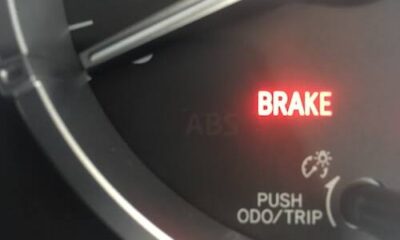FEATURES
Why do tires have tread

In terms of safety, tires are an integral component of a vehicle. The only contact a car has with the road is the tire so tread patterns play a critical role in how well the tire performs in different road conditions. Tires are made from specially formulated rubber compounds and the tread is engineered to provide specific safety features. Tire tread is an important development in tire evolution. The tire tread is the part of the tire that actually meets the road. The elements of tire tread include tread blocks or tread lugs, tread grooves, tread voids, wear bar, and any extra features such as a rain groove and siping. Tire tread spans the entire surface of the tire from shoulder to shoulder where the tread approaches the sidewall.
The areas between the tread blocks are referred to as the tread voids or tread grooves. Tread voids provide the tire with traction by enabling the tread blocks to move and flex as the tires to grip the road. They also allow the water to escape when roadways are wet. Tires with a high tread to void ratio provide better wet traction and braking ability. Just as vehicles are engineered with a particular type of performance in mind, there are specific tread types and patterns that match each kind of intended performance. Tire tread helps vehicles to corner tighter also tire tread is capable of helping to maximize fuel economy.
Driving can be a little risky during the monsoon season. Hydroplaning can occur when the car drives through puddles of standing water. If the water cannot squirt out from under the tire quickly enough, the tire will lift off the ground and be supported by only the water. Because the affected tire will have almost no traction, cars can easily go out of control when hydroplaning. This is where the tire’s tread design plays a very significant role. The tread blocks, sipes, and grooves in the tread make sure the water on the road finds an easy way to escape; as a result, nothing comes between the tire tread and the road. This is how the tires do not skid on the wet roads.
When we apply brakes while driving, we expect our vehicle to stop in the quickest possible time and shortest possible distance. The distance required for a vehicle to stop upon braking also depends on the condition and design of its tires. Brakes stop the wheel but it is the tires that are responsible for stopping our vehicle at the exact time.
-

 AVIATION5 years ago
AVIATION5 years agoPhoto News: Air Peace commence flight operations to South Africa
-

 Car News5 years ago
Car News5 years agoPolestar is recalls over 2000 electric cars due to software bug
-

 Technology5 years ago
Technology5 years agoCommon mistakes in CO₂ emissions calculations
-

 RAIL4 years ago
RAIL4 years ago36 Killed in Pakistan Train Accident
-

 Business5 years ago
Business5 years ago2016 Volvo XC60 review and specifications
-

 Reviews5 years ago
Reviews5 years ago2021 Audi A6 Specifications and Review
-

 SAFETY / CAR CARE5 years ago
SAFETY / CAR CARE5 years agoHandbrake warning light; what it means and what to do
-

 NEWS4 years ago
NEWS4 years agoFG To Spend ₦900 Billion On Fuel Subsidy In 2022
